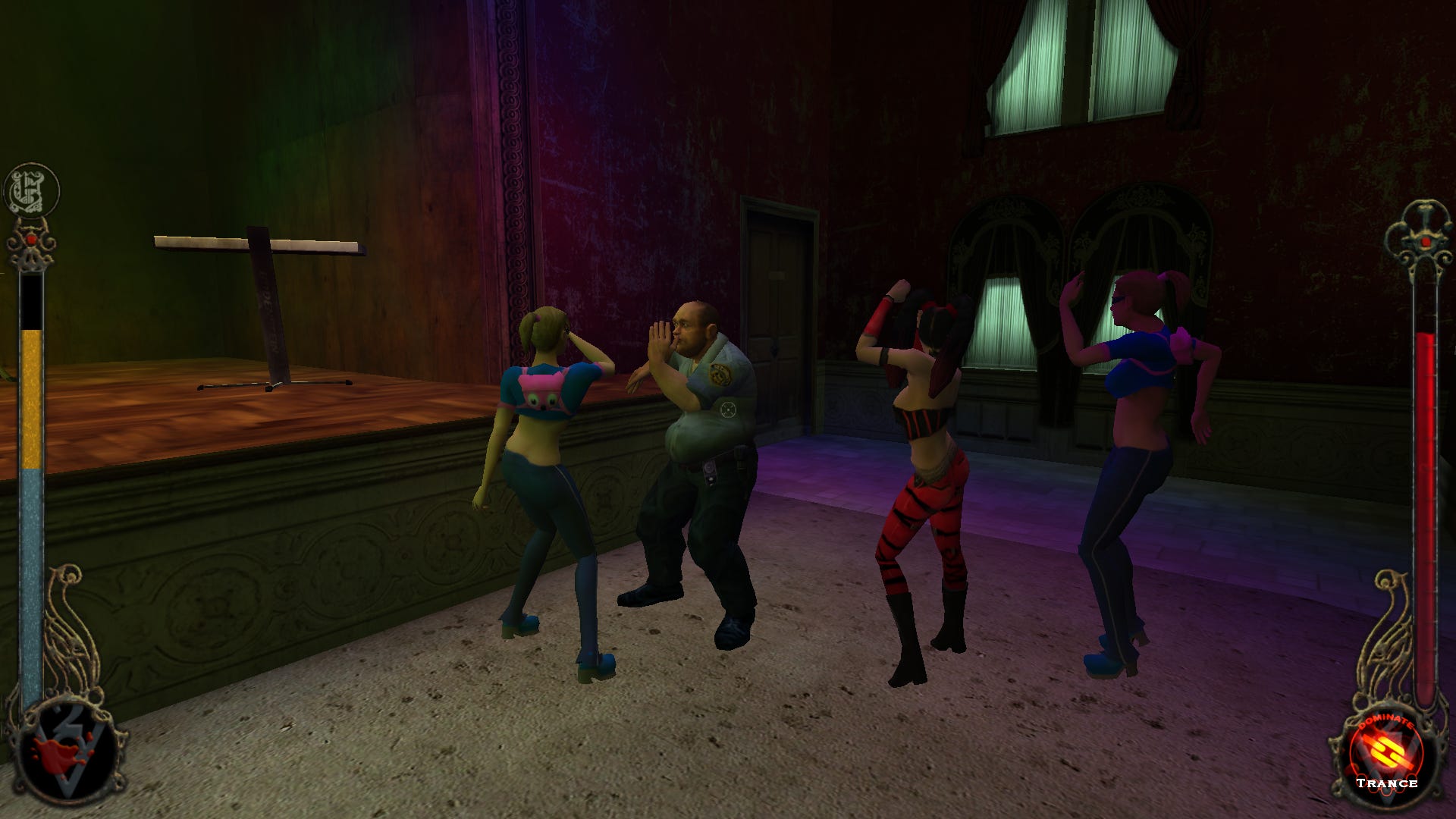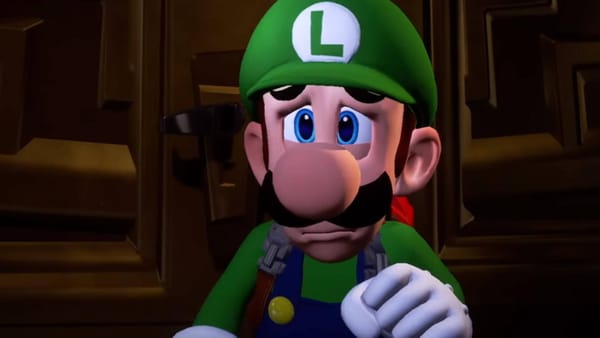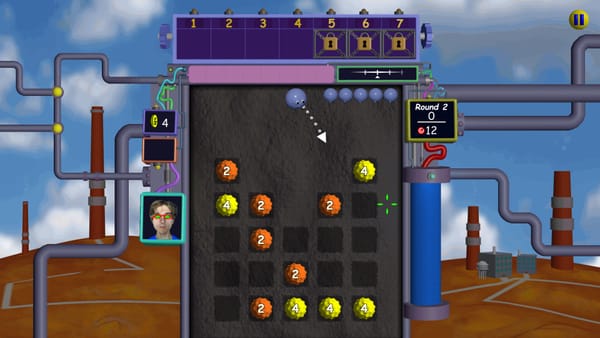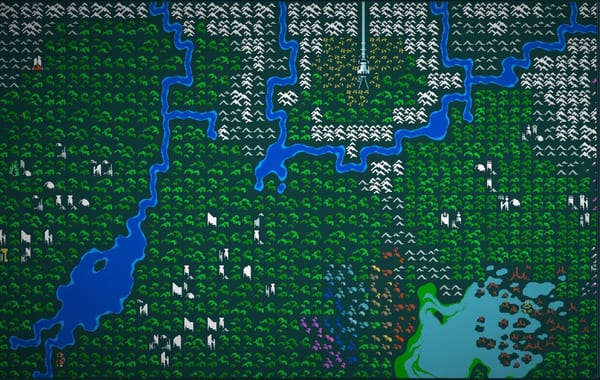Jank Love
...or how I learned to stop caring and play broken games.
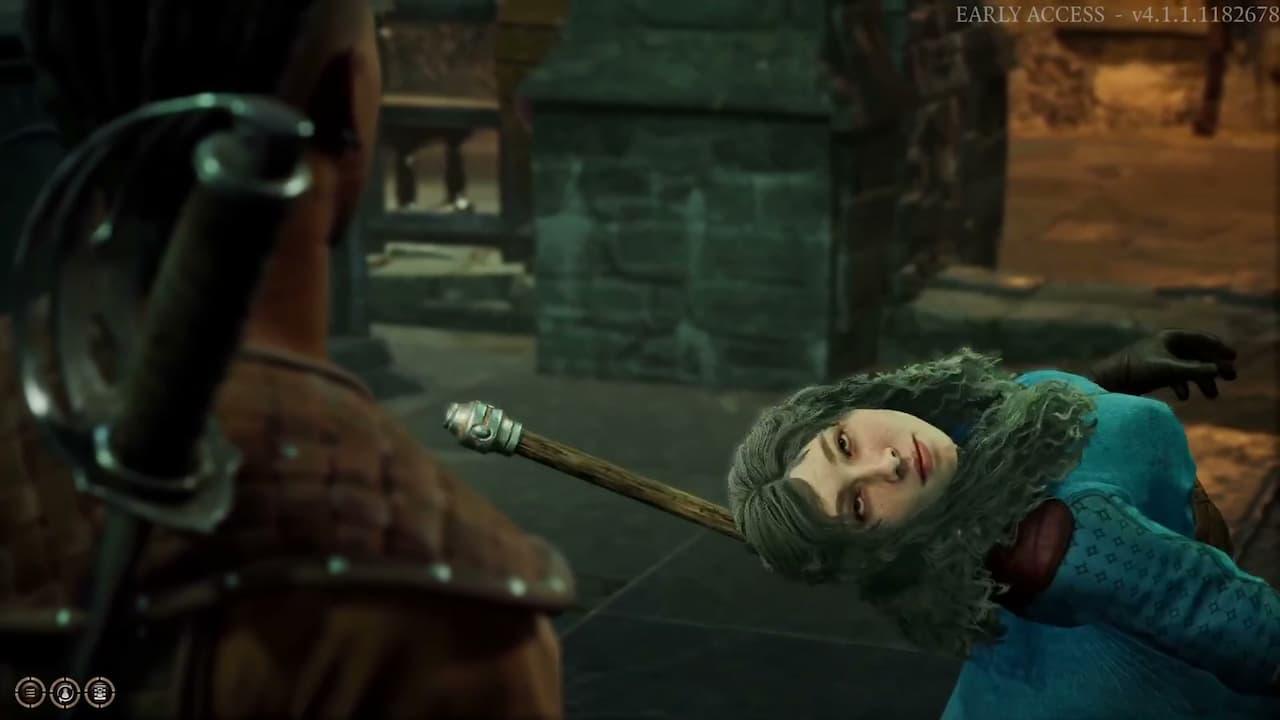
The release of Baldur’s Gate 3 was a resounding success. An expansive, tactical RPG with hundreds of hours of content, written with witty and engaging dialogue, supported by impressive voice work, stellar performances, and captivating story beats. The game ran surprisingly well for a game of its scope, with few bugs, glitches, and crashes, bolstered by continuous developer support in the form of patches and updates. It was lauded by critics and players for one quality that is often seen missing from AAA releases: polish.
Baldur’s Gate 3 has spread gasoline over the burning flames of a heated discourse. It speaks to the ongoing desire for quality products from videogame consumers. Fellow game developers have reacted with a certain fear, stating that producing games of such scope and quality could sink studios.
High expectations can be scary for developers; making a videogame, any videogame, is hard work. Even mediocre games encompass hundreds of manhours and thousands upon thousands of lines of code, not to mention the artists, voice actors, motion capture, etc. A high-quality game is often awarded such praise by the gaming crowd and critics when all these elements bleed into each other harmoniously—a synchronized dance between different departments.
On one side, the standards have been raised; on the other, fear over economic uncertainty clouds the minds of fellow developers, and who can blame them when 2023 industry layoffs reach an all-time high? This is not to state that we shouldn’t be demanding better from developers, but that polish alone cannot elevate a game, and the expectation that all games should have the level of polish that BG3 has is a bit ridiculous. All games, for better or worse, have some form of jank.
Charm, personality, and originality can be saving graces for janky games, and I would even go as far as to say that jank in gaming has unique qualities tied to the medium that can add to a game’s enjoyment and preservation in the cultural memory. A game can be cacophonous, miss the mark, be janky, and remain enjoyable, artistic, and profound.

Jank and polish share a complicated relationship. Jank isn’t solely the lack of polish and vice versa, but instead speak to aesthetic experiences unique to gaming. A polished game, for example, is one where animation flows nicely without obvious or visible stutters, or maybe a game whose gameplay feels tight, responsive, and engaging. A janky game is one with flailing limbs and visual glitches, where you see yourself let loose upon an open world, and your first step makes you fall out of bounds into an endless void because a programmer forgot to set collision detection.
Jank and polish are terms that speak to the general quality of a game, whether its rougher edges have been sanded off or if chittering bugs and glitches adorn the corpse of a broken game. A videogame can possess contradictory intertextual interpretations that coincide and co-exist. I don’t believe a game exclusively lives on either end of the jank/polished spectrum but can encompass both of the qualitative terms of this framework. No game in recent memory represents this better than Baldur’s Gate 3.
For such a vast, multiplicitous experience, it was able to keep track of an astounding number of variables. A dead NPC, a quest done in a specific order, long-resting too often, and missing a trigger event—it all was aggregated and referenced in future events and could affect the solution and approach to quests. What is more astounding to me is the thread that binds all this: all side content invariably leads back to the main quest. It paved the way to make Faerun a more believable world, where your choices and the way you engage in conversations and combat actually matter and affect your path forward. RPGs of this scope are usually released in less-than-ideal conditions, filled with constant glitches, bugged quests, and crashes. My experience with the first two acts was silky smooth, without any bugs, out-of-the-box glitches, or even a single crash on the desktop.
The polished experience heightened my aesthetic reception of the game; the intense combat scenarios were elevated by the fact that I feared no jank. When my teammates were down and victory was down to a risky fireball spell next to a set of explosive barrels, I didn’t have to worry about the sudden explosion closing my game, forcing me to restart from a save file last updated an hour ago. It made the world that much more immersive because jank is immersion-breaking. Nothing pulls you out of a game faster than hearing dialogue from a broken mess of pixels and polygons with wonky, stuttery animation, and Baldur’s Gate 3 had none of that.
As my journey etched closer and closer to the titular city of Baldur’s Gate, however, issues started sprouting up in the crowded streets that serve as the setting for the game’s third act. It was here that I experienced my first few bugs: quests stuck in limbo, unable to be completed, and storylines that had been developed over the course of 80 hours came to a screeching halt.
I didn’t have Wyll in my party, so I didn’t mind much when his quest bugged, but after toiling to help my beloved Karlach with the infernal engine stuck inside her chest, it was not the consequence of my choices that doomed her, but a game error. Despite having completed the required objectives and having all the necessary materials requested of me, Dammon, the smith who promised to repair Karlach’s flaming heart, would not budge. His dialogue would not proceed to the next stage. It was only after I finished the game that I discovered Karlach’s final act was bugged. The game had been released with one of the main companion quests unfinished.
Of course, it should be noted that a patch fixed this issue right up, and now Karlach has the ending she deserves, but it was particularly striking how much less polish the final act had. Baldur’s Gate 3 suffered the same fate as most open-world RPGs, where the more you proceed, the more Jank comes out front and center, making it harder to ignore. Jank is inescapable, and so gamers must grapple with it, either by dictating acceptable levels of polish, decrying Jank outright, or by embracing Jank in all its silly glory.

Larian Studios is not unique in its business model. Baldur’s Gate 3 is not the first game to reach mainstream success after being first released in early access or the first game to reach such a wide audience without a publisher.
Sven and others at Larian were not so focused on their game making a profit but more concerned with the quality of the product they were developing. They were especially attentive to player feedback. They wanted to deliver a quality game with a beginning, a middle, and an end, with no micro-transactions. They held great love and admiration for the previous games and have been wanting to make a sequel since 2014. I think they, too, did not expect BG3 to be the hit it ended up being.
It is the combination of all these factors that makes Larian a unique studio; this is the type of quality we can expect when studios make gamers active members of development. When you engage with your audience correctly, focus on quality over profits, and refute the use of publishers. Most game developers, especially AAA game studios, can’t afford such a luxury. Publishers are, for the most part, blood-sucking leeches that stifle creativity and apply unneeded pressure on creators. The next game I’ll explore tells the consequence of publisher pressure and allows us to explore another game that, equal to Baldur’s Gate 3, exists in multiplicity on the jank/polish spectrum, albeit skewed towards the opposite end.

From one set of bloodsuckers to the next, I fucking hate vampires. Miss me with that Twilight shit; fuck off Dracula. I am not generally a fan of the pale-skinned, fanged-teeth night-prowlers. What moved me to try Troika Games’ Vampire: The Masquerade: Bloodlines is the stranglehold this role-playing game has in the online community—the reverence with which people state its lengthy title. There is a saying amongst the fans of V:TM-B: “Every time you mention it, someone will re-install it." It’s deserving of its cult status, for it is a truly amazing game—if you can move past the jank.
After a night of drunken debauchery, your suspiciously light-skinned paramour transforms you into a vampire. You are both immediately captured by vampire cops and your lover summarily executed. “Siring” a vampire without the approval of the leading vamp organization, the Camarilla, is a violation of vampire law, known as “The Masquerade," a series of rules and regulations to prevent mortal society from discovering the existence of the paranormal. As your head sits on the chopping block, an anarchist vampire defends your innocence, so the leader of the Camarilla, the slimy and pretentious LaCroix, spares you under the condition you do his dirty work. From here, you are let loose into a world of darkness and conspiracy, on the search for an ancient Macguffin of a coffin that promises untold power or doom to its beholder.
A Camarilla bootlicker or the next vampire legend: you purvey your own fate. Vampire: The Masquerade: Bloodlines is not a lengthy or vast RPG, but it makes up for it by being highly replayable. Each clan of vampires you can choose from in character creation offers unique dialogue, skills, and ways to approach the game’s obstacles. From the animalistic Gangrels that rely on brute strength to the sneaky and physically deformed Nosferatu clan, whose very presence above ground is a Masqeurade violation, My favorites are the Malkavians, schizophrenic prophets that speak in riddles and argue with stop signs and TV screens. They say goodbye by blankly stating, “I am no longer here." They can infect others with their madness, making guards and enemy NPCs laugh maniacally, attack each other, or point their guns against their own temples and pull the trigger. However, if you pick a charismatic Toreador with the intention of smooth-talking it all the way to the end, you will be sorely disappointed. You can try to sneak or talk your way through the enemies, but violence is inevitable: you must have a combat-viable build, and the combat is absolutely awful to engage with.
Jank remains the appropriate term to use. The animation is wonky, your character flails their limbs and airflips wildly when in melee combat, and there’s very little in the way of response; your attacks don’t seem to have much weight to them. A number indicator floats above enemy heads, indicating damage has been done, but other than a simple oomph, a pained grunt, or a slight twitch in animation, there’s no effective player feedback that your hits are connecting. Gunplay isn’t much better: enemies, especially in the late game, tend to be bullet sponges, and there’s little satisfaction to be found in shooting. Runnin’ and gunnin’ feel like they lack gravitas and proper player feedback.
In this, we see an expansion of the concept of jank, where game feel and design can be jank in and of themselves, which isn’t to say V:TM-B has any shortage of glitches, bugs, and crashes. The makers of V:TM-B, Troika Games, produced a half-baked game that later became a cult classic. And it’s important to realize its shortcomings, especially when compared to Baldur’s Gate 3, are also a result of the game developer’s positionality in the gaming industry.

V:TM-B was in development for 3 years, half the time that Larian had for Baldur’s Gate 3, and they had to deal with multiple setbacks and seismic pressure from their scummy publisher, Activision. No producer was assigned to the project until after one year of development, and this lack of oversight, combined with pressure to release the game before the end of 2004, riddled the game with technical issues and slow progress. It started with a similarly vast scope as BG3, with multiple play styles and a big open world, but the experience had to be scaled down rather than continuously worked on. The early access model was nonexistent and inconceivable during the early 2000’s. To make matters worse, it was the first non-Valve game that was being developed with the (at the time) brand new Source engine, an engine that the developers found incredibly difficult to work with. It was a clear case of them biting off more than they could chew.
Troika Games had every intention of delaying the game until 2005 to give it more time to cook in the oven. Then Activision forced their hand, making them release a broken game for the 2004 holiday season. Vampire: The Masquerade: Bloodlines had to compete with the likes of such critically beloved blockbusters as Halo 2, Half-Life 2, and Metal Gear Solid 3: Snake Eater. It is fair to say that reviews were mixed and the game sold poorly. Vampire: The Masquerade was borderline unplayable at launch, redeemed in the modern day by extensive fan patches.
So, why do I love this game when I’ve stated clearly that the development and game feel are absolutely hellish and that the only way to play and enjoy it is to install fan patches, which still don’t fix many of the game’s bugs, glitches, and crashes? Well, Vampire succeeds in its excellent writing and world-building. It is here where the polish of Bloodlines resides and saves the game from being forgotten.
It’s a game that excels at making each NPC have a unique voice and that plays with tone incredibly well. It's a game steeped in an incredibly dark atmosphere while retaining wit and tongue-in-cheek dialogue. It’s a game that is able to horrify with its infamous Ocean Hotel sequence and then make you chortle a few hours later when you run into bail bondsman Arthur Kilpatrick. As I’ve stated: I fucking hate vampires, and the fact I can still classify this game as one of my favorite RPGs is an accomplishment in it of itself.
There are times where the jank contributes to the game’s humor. I love the dance moves you can pull off in Californian nightclubs. In one of the potential endgames, your character gets picked up by a big-ass bat, and your player model goes stiff as a board, as if an eagle were carrying a wooden plank.
It remains a masterclass in worldbuidling, a lesson on how to make up for your game’s shortcomings with earnestness and passion. I cannot recommend this game enough. If this essay has convinced you to play it, just do me one favor: whatever you do, do not open the Ankaran Sarcophagus.

Baldur’s Gate 3 and Bloodlines speak to the complicated relationship of jank and polish. While on opposite sides of the spectrum, they contain both facets. Jank is more forgivable in Bloodlines because there’s no way to experience the wonder of its world without it, whereas Baldur’s Gate 3 is so squeaky-clean polished any obvious glitch or bug rattle the smooth gameplay experience.
Vampire: The Masquerade - Bloodlines had troubled development, it’s clear a lot of love went into its production. Baldur’s Gate 3 had the same amount of passion poured into it, and will remain an astounding, immersive experience for years to come. They speak to a sad truth in the gaming industry: a game’s polish is defined by its development cycle and produces a specific aesthetic experience. So we shouldn’t decry jank so strictly.
I wanted to write about Bloodlines to make a point: let’s be more charitable to our game developers, and the labor pressures they face. Let’s demand more polished games by improving the working conditions of the gaming industry. Let’s be more forgiving to jank, and find more ways to enjoy and embrace it. I certainly know I will.
